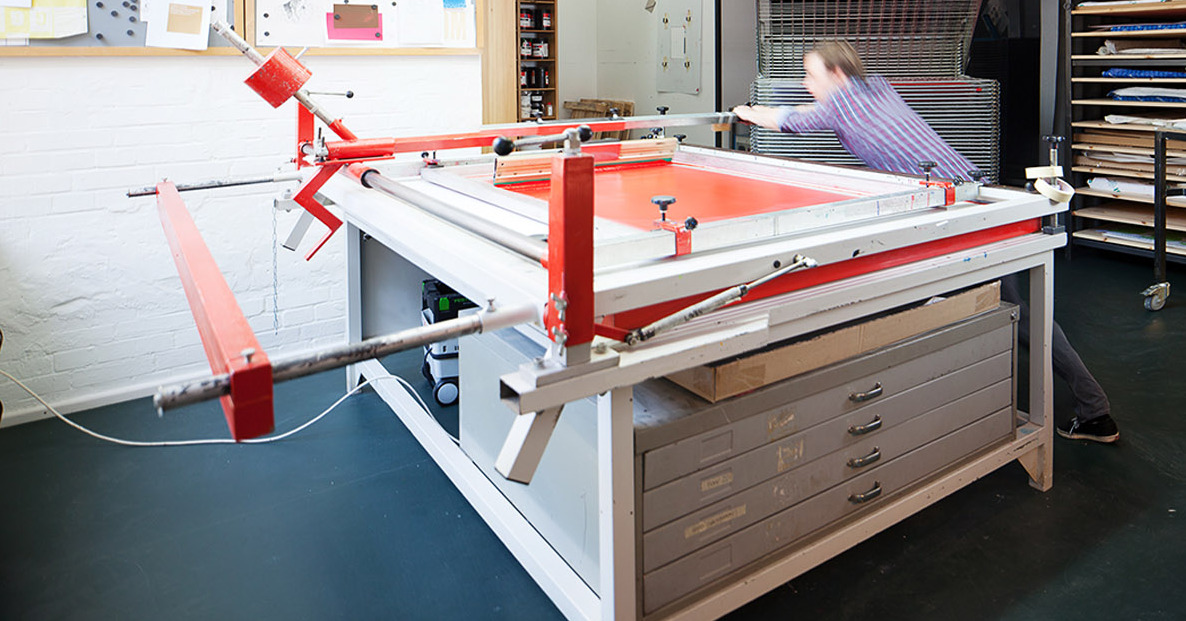
In collaboration with Handsiebdruckerei Kreuzberg (Photo: Waldemar Salesski)
How would you describe manual screen printing in two sentences?
Manual screen printing is a screen printing method with stencils. Contrary to industrial screen printing, the entire printing process is manual.
What is special about this technique?
Compared to printing with the screen printing machine, manual screen printing is more cost-effective for smaller print runs. Drying each individual printed sheet on a drying rack allows for a wider range of printing materials (cardboard, driftwood, glass) as well as different colours.
What are the technical aspects of screen printing?
In the early days of screen printing, silk fabric was used to make the screen stencil – hence the term “silk screen”. Nowadays mainly nylon fabrics available in various degrees of screen-size or fineness are used: Coarse fabrics are more translucent, but tend to bleed around the edges; finer fabrics allow for precise details, but with less inking.
What is possible with the method – and what isn’t?
For the purposes of health and safety and environmental sustainability, most manual screen printers use solvent-free acrylic inks. If these inks contain high-quality pigments, they produce the same results as solvent inks. Brilliance and colour-fastness are identical but the ink dries more slowly and creates buckles in thinner papers. On metal and glass surfaces these inks are not very scratch-resistant. Cotton papers such as PURE COTTON are the most suitable papers for this printing method.
Which colours are possible?
In theory the number of printing inks is unlimited. However, prints with more than six colours are rare because only one colour per print run is applied. Therefore, two press runs are necessary for two colours.
How many sheets should be printed?
The size of print run is limited by the drying capacity in most cases, because each sheet needs to dry in a separate compartment. Therefore, several hundred printed sheets are the maximum for many manual screen printing companies. If printed with multiple copies, larger print runs are also possible.
Which papers, grammages and formats are suitable?
Due to the water content of acrylic inks, thinner materials tend to bulge, which means that most printing takes place on paper with a grammage from 200 g/m2. For artistic purposes, mainly cotton cardboard with an approximate grammage from 300 g/m2 is used. Machine-made or handmade deckle-edge paper made of cotton fibres is also very suitable for manual screen printing. Heavy cardboard and plywood panels also work well.
What are the best uses and projects for manual screen printing?
Together with artistic prints, i.e. serigraphic prints, book covers, business and invitation cards, signs and exhibition display boards are the main areas where manual screen printing comes into its own.